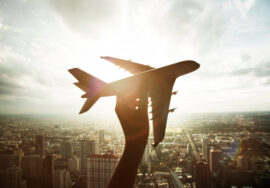Starbucks’ CEO Says the Company Is Considering a Major Change that Will Make Some People Uncomfortable. It Highlights a Growing Challenge
[ad_1]
Starbucks has long said its mission is to be the third place for its customers. If your home is the first place, and work the second, Starbucks wants its stores to be the other place you go and spend time.
It seems to have worked. Drive by any Starbucks on any given day and it’s probably full of people. Yes, most of them are probably drinking coffee, but that’s not the only reason they are there. They’re meeting with friends, having a business meeting, writing a term paper, or working on a project. They’re–hanging out.
And, for a long time, Starbucks has wanted to be everyone’s third place, even if they don’t spend $5 on a latte. After a high-profile incident in 2018 involving the arrest of two black men who were waiting for a colleague, Starbucks said publicly that “any customer is welcome to use Starbucks spaces, including our restrooms, cafes and patios, regardless of whether they make a purchase.”
Now, however, Starbucks’ CEO, Howard Schultz, says the company is reconsidering its position due to what he says is a growing mental health problem. “We have to harden our stores and provide safety for our people,” Schultz told Andrew Ross Sorkin in an interview at The New York Times DealBook D.C. policy forum. “I don’t know if we can keep our bathrooms open.”
For Starbucks, the change would be a pretty significant shift in the company’s culture, something Ross Sorkin pointed out during the interview. If your mission is to be everyone’s third place, hardening your stores is probably the last thing you want to have to do.
I really don’t think the people who work at Starbucks want to be in the position where they have to police who uses the bathroom, or who sits at a table without ordering a drink. That’s what got the company in a bad place to begin with.
I also don’t think Starbucks’ management really wants to spend time thinking about how to handle situations where employees have to ask people to leave. If you’ve gotten to that point, you’ve already lost.
At the same time, if you happen to need to use a bathroom and a Starbucks is close by, it’s probably going to be uncomfortable to find a sign saying you have to buy something first. It sort of goes against the way we think about Starbucks. It’s certainly not the welcome feeling you might expect from your ‘third place.’
The problem is that if you create a place that is open for everyone, some of those people will bring with them whatever baggage they are carrying. And, if your bathrooms are open to everyone, how does that affect the experience you provide your customers?
For that matter, who exactly are your customers? Is it only people who spend money in your stores? At some point, you have to make hard decisions.
The company’s position in 2018 would seem to indicate that Starbucks views everyone as their customer. At the time, however, Schultz (who had previously stepped down as CEO) said he wasn’t trying to turn Starbucks’ stores into public restrooms, but that having an open policy would reduce the likelihood of future situations where employees are asking people to leave, especially when bias could play a role.
It’s really a challenge for every company: How do you provide a welcoming environment for people while balancing that with a need to keep them safe. Ironically, it’s a challenge businesses have spent the last two years trying to figure out, albeit in the context of COVID-19. Some of those same lessons apply here, however.
For example, every business needs to base its policies on what is most important. During COVID-19, that was health and safety. That meant wearing masks and social distancing, both of which are obviously inconvenient, but necessary to stop the spread of a highly-contagious virus.
Those policies mean serving fewer people–both because you want to limit the number of people in your store, but also because some people will simply go somewhere else. At the same time, taking care of your people should come first–even over serving more customers. You owe it to them to protect their safety, even if it means that you can’t be everything to everyone.
It turns out, the things that are good for your people, are often for the benefit of your customers as well. If limiting the number of people who come in your store allows you to better serve your customers, that’s, well, good for your customers.
[ad_2]
Source link










